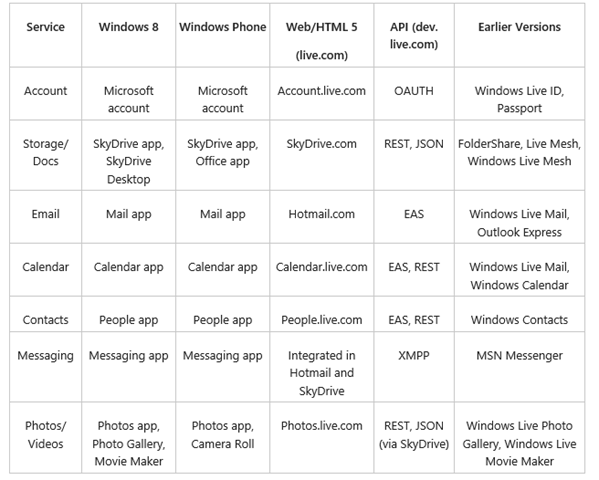One of the most frequent complaints against Microsoft in the past is that they have not been innovative enough and that they tend to follow meekly behind others who have been far more ready to take risks in the past such as Apple. I’ve even been guilty of that accusation myself. But as a user, here’s my take on things for what its worth.
In the past, Microsoft has been the main company serving the corporate technological world. During the years when it was generally only companies and/or institutions who used PC’s, and when most of us ‘none corporate’ users didn’t dream of owning a home computer, Microsoft aimed their sights firmly at the business sector and their usage needs. Word processing, Spread sheets, Databases, and an operating system geared to the running of a business meant that most of Microsoft’s main focus was squarely aimed at the corporate user. And rightly so. But in the meantime and certainly since the launch of Windows XP, the user base has slowly shifted from being just the corporate sector usage to the ordinary consumer ‘in the street.’
Microsoft seemed to be oblivious to the shift taking place from the corporate user to the consumer user. It was as if they had their eyes firmly set in only one direction. Others such as Apple and Google were never as focused on the corporate usage side of computers, and therefore they have been quicker to see the demographic shift in needs. There is a huge difference in how an ordinary consumer at home uses technology and their PC to how they are used in the workplace. Consumers tend to prefer to share, photos, short messages, music, etc, and this need has mainly been met by social networks such as Facebook and Twitter. Not only that but most prefer to do this ‘on the move’ and to not be tied down to a static home PC, hence the rise of laptops, tablets and ‘smart’ mobile phones. The consumer user base has slowly grown since the launch of XP, but meantime most of the corporate sector has not kept pace and most remain still using Windows XP.
For them, ( I should imagine) its a very big undertaking to move forward to a new operating system as it involves the training of all of your staff in its usage. I was shocked last year to realise that the entire NHS is still using Windows XP whilst I’m now running Windows 8 Consumer Preview! What I am trying to say here is that whilst corporate usage has not moved on, the consumer usage has grown and grown and has become far more advanced.
Now suddenly its as if Microsoft have glanced around from the direction they have always faced and suddenly noticed that its the consumer who is rapidly becoming the de facto user and their usage of technology needs to be met. The big question is, are they too late? The tablet market is currently dominated by Apple with the iPad with even Android having difficulty making any dint in that area, and despite the fact that Windows phone is fantastic to use, they have an uphill battle all the way. Talking of Apple, one of the paths that they have not taken was to try and merge the same operating system on both their iMacs and also the iPhone and IPad. Now, Microsoft are planning the risky step of doing exactly that, serving both the static PC user (which by definition includes the corporate user) AND also the mobile phone/tablet market. Can it be done? Is it possible to meet every type of users needs with just one OS?
Paul Thurrott sums it all up for me in one of his recent posts on the subject of Windows 8 here at http://www.winsupersite.com/article/windows8/windows-8-release-preview-rip-aero-20032012-143133 and I agree that in ‘bending over backwards’ to enter the tablet and mobile hardware market, where of course battery life is crucial, are Microsoft going too far and forgetting the static PC user who up until now have been their bread and butter? Should they instead have one operating system for mobile devices (i.e Metro) and simply keep Windows OS for those users who run a static PC or who want to remain with the Windows environment?
Personally, I am now quite used to using Windows 8 on my static PC with a mouse and keyboard and I really like it, but I have to admit that the Metro interface does look (and work) far better on my phone working with touch input. Nor am I needing several programs open at once or to do any word-processing or work of any kind, my needs and usage is far removed from those of the corporate user. And there is the big question mark. If most of the corporate world is still using Windows XP, can I see them rushing to move to Windows 8 anytime soon? To be honest with you, no I can’t. Nor can I envisage users such as the NHS equipping all of their staff with tablets either!
It’s all a very big gamble and one that is sort of surprising in a way coming from Microsoft, a company that most consider to be a ‘dinosaur’ who never innovate or do anything new. Can they pull it off? It’s certainly going to be a very interesting year finding out!
TG


